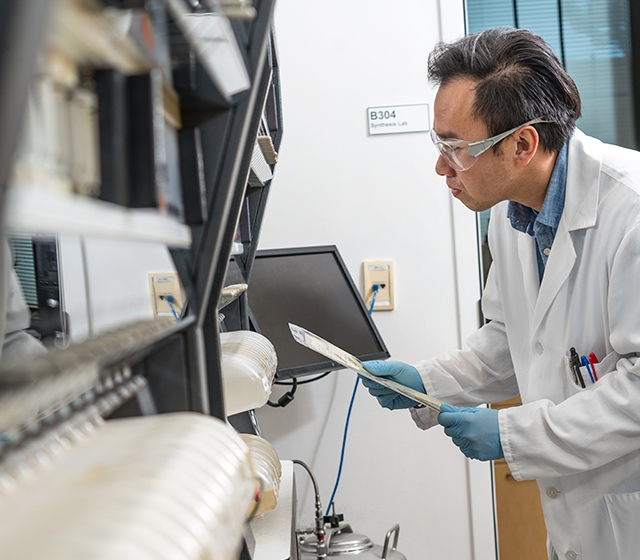Antimicrobial Peptides
Important components of
the innate defenses
Cationic antimicrobial peptides are important components of the innate defenses of all species. More than 100 of these peptides have been identified in numerous organisms, including fungi, insects, amphibians and humans. These hydrophobic and amphipathic peptides exhibit antibiotic, fungicidal, hemolytic, viricidal, and tumoricidal activities.
3 classes of antimicrobial peptides
Based on their structural properties, these antimicrobial peptides can be grouped into three classes:
- peptides that are helicoidal,
- peptides containing one to several disulfide bridges
- peptides rich in certain amino acids such as proline or tryptophan.
Peptides that kill
bacteria
Most of these peptides share some common characteristics, such as their low molecular mass (2–5 kDa), the presence of multiple lysine and arginine residues and an amphipathic nature. Although the exact mechanism by which they kill bacteria is not clearly understood, it has been shown that peptide–lipid interactions leading to membrane permeation play a role in their activity.
Examples of antibiotic peptides include magainins, secreted by the skin of Xenopus laevis; defensins from the human neutrophils and histatins from human saliva. Cecropins are produced by insects under conditions of infections.
References
- Won, H. et al. Eur. J. Biochem. 269, 4367 (2002)
- Hancock, REW. and MG. Scott, Proc. Natl. Acad. Sci. USA 97, 8856 (2000)
- Andreu, D. et al. Proc. Natl. Acad. Sci. USA 80, 6475 (1983)
- Vaara and T. Vaara, Antimicrob. Agents Chemo. 38, 2498 (1994)
- Vizioli J. et al. Insect. Mol. Biol. 9, 75 (2000)
- Silvestro, L. et al. Antimicrob. Agents Chemo. 44, 602 (2000)
- Helmerhorst, E. et al. J. Biol. Chem. 274, 7286 (1999)
